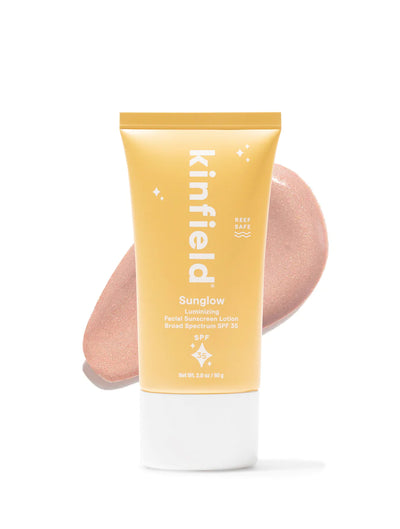Part 2 – Acne: How and What to Address
A big problem with the way acne is addressed by the general public is the tendency to over simplify this incredibly complex and multifactorial condition. Too often we will see someone ask for advice on a social media platform only to be bombarded with responses like:
Use Tea Tree Oil!
-
My grandma swears by Vaseline.
-
I love my Rodan & Fields - DM me for details!
-
Amazonian Clay has done wonders for my sister’s husband’s teenage niece!
-
Stop eating dairy.
-
The biggest problem with any one of these “solutions” is that, at worst, it could make the situation much more severe and create new problems. At best these options only address a single part of a multifaceted problem.
I spend a lot of time explaining the process of truly clearing acne to clients. It isn’t that I seek to demonize everything as problematic. Rather, I am attempting to show them that, in order to heal acne, we have to attempt to manage as many potential factors and variables as we possibly can. We can only isolate what is actually problematic for any specific skin condition once we have a clear foundation to assess with…and we can only get that clear foundation through a systematic, deliberate and sometimes somewhat strict period of attentiveness to the skin.
In my years as an esthetician, I have seen people who can eat plenty of dairy with no influence on their acne, and individuals who breakout in the same room as a cheese plate. Some people are able to experiment with makeup that contains certain potential comedogens and it causes no issues, whereas others experience considerable repercussions. Acne is a multifactorial condition affecting our body’s largest organ. Is it any wonder that the factors which truly influence it vary considerably from person to person?

Let’s look at some of these factors.
Inflammation
The Technical:
While there is obvious involvement and little debate of inflammation’s role in the later stages of acne, thanks to visibly inflamed papules and pustules, recent studies have produced evidence of inflammation’s role prior to the formation of microcomedones. Microcomedones are acne lesions in their beginning stage underneath the skin before we ever see them on the surface.
Despite how technical this may sound, it is important to recognize that certain Cytokines (protein-based cell signaling molecules) play a very large role in both the immune and inflammatory response within the skin. These secreted proteins are released by cells and have a specific effect on the interactions and communications between cells. This can be both beneficial and problematic depending on the location, concentrations and specifications of the cytokines.
Research shows that there are an abundance of factors which can influence the release of certain cytokines which can contribute to the formation of acne. People who suffer from acne have higher levels of inflammation present in their skin.
The Gist:
Acne is an inflammatory condition and inflammation must be addressed in order to manage acne.
One of the many problems with much of the treatments for acne today is that they focus exclusively on immediate relief from inflammation without thoughts to sustainably addressing it or its causes. While a substance can offer the temporary relief of inflammation, if it contributes to a sequence of events which leads to further inflammation, it will perpetuate a cycle of acne. If that sequence of events includes impairing the skin’s natural barrier defenses, then that subsequent dehydration will actually slow the healing of future acne lesions. It will not only perpetuate the cycle, but worsen it.
Ways to Address Inflammation:
Anti-inflammatory ingredients in skincare are going to play a crucial supporting role in managing acne. AnteAGE’s Serum contains some of the most anti-inflammatory ingredients on the market today thanks to the use of the anti-inflammatory cytokines within their products. As mentioned before, these messengers help with cellular communication and, in the case of the inflammation seen with acne, encourages the skin to behave in a more regulated and controlled manner. Bel Mondo's Moisture Renewal Mask can also be used regularly to keep inflammation down as well as Hale and Hush's Relief Bio Powder, a super versatile product which can be used as a spot treatment, applied dry or wet, mixed in with skincare products or even makeup.
The Skin’s Main Lines of Defense
The Technical:
While our skin is a defensive structure that protects us, the skin itself has its own lines of defense. The first 2 lines of those intricate defensive systems play important roles in the formation of acne; the Microbiome and the Skin Barrier. Disruption of either can compromise subsequent lines of defense, lead to dehydration, inflammation and slow-to-heal skin.

The Gist:
Support the skin’s natural defenses by keeping the skin barrier intact and supporting the microbiome. You can read more about this foundational support for the overall health of your skin (in a completely acne safe manner of course) here.
Ways to Support the Skin’s Defenses:
The skin microbiome and its importance in the formation of acne is still a relatively new discovery. Not only are there few products supporting this main front line of defense, but many products on the market actively disrupt the microbiome. Because the skin barrier and microbiome are so closely functionally related, focusing on supporting the skin barrier is typically a good way to support the skin’s microbiome. There are also quite a number of products making their way onto the market containing topical pre and probiotics. Some of the most effective I’ve seen:
Serums: Roccoco's Globiotic, Clarifying C Serum
Moisturizers: Roccoco's Eruption Emulsion and AnteAGE's Moisturizer
Other forms of support: Anna Lotan Moisture Splash and Filterbaby Water Filter for your sink (use the code SKINANDBAREIT for 5% off)
Recent studies also show that the gut microbiome is involved in acne through interactions with the skin microbiome. As commonly used topical and systemic antibiotics induce cutaneous dysbiosis, the need to support both the internal and external microbiome is becoming more important to yield sustainable and long term results.
Before rushing out to buy a probiotic, keep in mind that internal bacteria tends to be a whole different ball game. Conditions of bacterial overgrowth, such as SIBO (small intestinal bacterial overgrowth), could have those probiotics playing a role in heightening inflammation. Working with a functional medicine doctor and having tests run is the best way to ensure you are supporting your body and not causing harm.
Hormones
The Technical:
Testosterone is active in everyone’s bloodstream but the active form of testosterone associated with acne is DHT or dihydrotestosterone. More powerful than testosterone in its normal form, almost 10% of the testosterone produced by an adult each day is converted to dihydrotestosterone. While this is not a problem in those who don’t suffer from acne, it is generally a main factor for those who do.
In order for testosterone to be converted to DHT we require an enzyme known as 5-alpha reductase. Higher levels of type 1 5α-reductase activity are detected in glands derived from acne-prone areas of skin, such as the face, compared with glands from other areas, such as the legs or arms. If we are able to successfully block or inhibit local production of the 5α-reductase enzyme topically, testosterone cannot be converted in those areas therefore leaving you with a reduction in acne lesions driven by this particular contributing factor.
The Gist:
While the term “hormonal acne” may be a misnomer, as mentioned in part one of this acne series, all acne has hormonal influencers. Acne can be and often is influenced by completely normal hormonal fluctuations in the body due to hypersensitive and reactive follicles. This doesn’t always indicate a hormonal imbalance and attempting to address it internally often won’t be as successful as addressing it topically.
Ways to address hormone driven acne:
By utilizing ingredients which address the enzyme in the skin which contributes to the conversion of Testosterone into DHT, we are not only able to reduce the amount of lesions created on the skin, but can also bring down existing inflammation. While almost all of Roccoco’s acne products includes ingredients which help keep the detrimental effects of this conversion process at bay, for those who believe hormones play a more substantial role in their acne, Rococo’s Plant Harmonizing Serum is packed full of these specific influential ingredients. Of course keeping the skin barrier healthy and inflammation levels low will also help.
Comedogenic ingredients
Because much was covered in regards to this particular issue in the first part of this series, I won’t prattle on too much. While there is certainly much we need to learn about definitively assigning full comedogenic blame to any given ingredient in any concentration, it’s tough to rely on the very industry attempting to put profit ahead of function for that information. During the clearing process, it can be anywhere from beneficial to crucial to eliminate all potential comedogens, even in small concentrations, while the healing process takes place. In a few rare cases, I have even witnessed eliminating comedogens be enough to clear acne completely.
In conclusion, it is vital that we recognize that some of the narratives and past information regarding acne has been incorrect and often harmful. Many with acne can relate to the feeling of hopelessness as they explore every avenue, meet with every professional only to have their condition worsen. I know I can. I was among that population of individuals at one time. It was the reason I have dedicated so much of myself to the pursuit of a solution.
While acne cannot be cured, it can be managed and that management doesn’t have to involve beating it into submission or aging at a faster rate than our non-acne prone counterparts. It is a difficult condition, but through understanding, comes healing.
If you need help, please look into our resources:
- Join the community for education driven discussion on all things skin
- Schedule a consultation for ongoing support and to get your acne managed
About the Author:

Dru Pattan is a Licensed Esthetician who specializes in acne while taking a skin healthy approach to sustainably healthy skin known as Corneotherapy. She believes that we don't need to beat the skin into submission to make it comply. By monitoring the skin's needs and offering nourishment we are able to heal common ailments which can often seem lifelong and defeating.
Dru has been licensed since 2014 and has spent the majority of that time relentlessly hunting down advanced education within the industry. When she herself is not studying, she is offering education and support to clients and other professionals within the industry.




Leave a comment